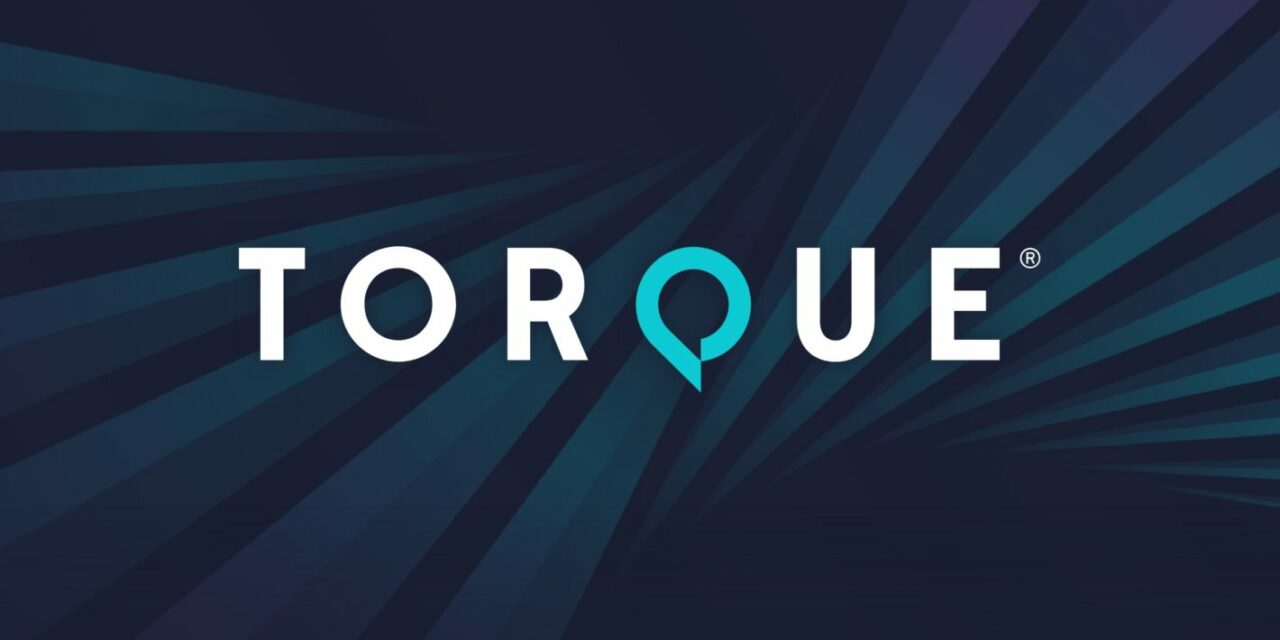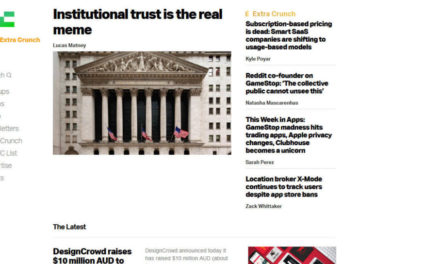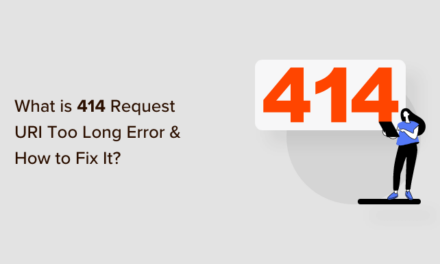Welcome to Press This, the WordPress community podcast from WMR. Each episode features guests from around the community and discussions of the largest issues facing WordPress developers. The following is a transcription of the original recording.
Powered by RedCircle
Doc Pop: You’re listening to Press This, a WordPress Community Podcast on WMR. Each week we spotlight members of the WordPress community. I’m your host, Doc Pop. I support the WordPress community through my role at WP Engine, and my contributions over on TorqueMag.Io where I get to do podcasts and draw cartoons and tutorial videos. Check that out.
You can subscribe to Press This on Red Circle, iTunes, Spotify, or you can download episodes directly at wmr.fm.
On this episode of Press This, we’ll be talking about headless eCommerce. But first just a quick side note. On this day in 2011, Rebecca Black released her hit song Friday on YouTube, and within a few months the song had over 160 million views. 12 years later, the song has reached about 300 million views.
Now, if we look back at the web around that time, eCommerce back in 2011 made up a little over 4 percent of all US retail sales. 12 years later, and eCommerce is up to 16.5 percent of all retail sales in the US. Now, that’s a sharp growth. And unlike Rebecca Black’s debut single, that number is still rapidly increasing. We see a steep increase still happening.
So on today’s show, we’re gonna talk with Bryan Smith, the Principal Product Manager for Atlas eCommerce, about current trends in eCommerce and how decoupled WordPress is providing companies with more flexibility. Bryan, welcome to the show. I’m sorry if I accidentally got Friday stuck in your head.
Bryan Smith: Hey, no problem. Thanks for having me. Doc. I appreciate it.
DP: How did you get involved with WordPress and how long have you been in this space?
BS: Wow, that takes me back to 2011 actually. I think it was around the time that I moved to Austin. I was looking for a job and my brother-in-law was big into WordPress and he’s like, “Hey, you should set up your own website.” I think that was the first WordPress site that I ever set up.
But, it wasn’t until 2018 that I joined WP Engine and I worked closely with the Genesis team. It was right after the WP Engine acquisition. I was the product manager for that team for quite awhile. And here I am four and a half years later now working on headless eCommerce with the Atlas team.
DP: We talk about headless quite often on this show. There’s terms like headless, decoupled, and I’ve heard composable eCommerce. Can you tell us, are those three things the same thing?
BS: I would say certainly, headless and decoupled are used interchangeably quite often. I’d say composable is being used more. Some people use it interchangeably. I think, at least in my experience, I first read about composable from a Gartner research report.
But it’s really the idea that, as more companies evolve their approach to building their digital experiences of the future, they’re gonna want to use, essentially what they think of as the best of breed tools. You want the best CMS, WordPress, to do the job you want the best eCommerce platform, whatever that is for you.
You want the best checkout solution, and maybe that’s not from your eCommerce provider. You want the best product review service. So there’s all these different, what they call package business capabilities. And of course, microservices and the APIs, these companies make it possible for you to kind of pick and choose the best tools that are gonna meet the needs of your site. So that’s really what we mean when we say composable. Like, you’re gonna want to compose the digital experience using the tools that you want.
And oftentimes that implies headless. Because the presentation layer is just one of those pieces of the puzzle.
DP: Okay. By presentation layer you’re talking about if it’s a website or if it’s something else, right? Because it’s headless. It could be an iPhone app or something running on a screen on your Lyft or something like that. Right?
BS: That’s right. Absolutely.
DP: So why is headless architecture playing a larger role in eCommerce these days?
BS: Yeah, I think what a lot of merchants are finding is that some of the platforms that have sprung up over the last 10 or 20 years are kind of all-in-one solutions, but they’re all often built kind of on that monolithic architecture. Everything’s coupled together. And a lot of the challenges that they run into with that is they’re kind of the jack of all trades, the master of none, so to speak.
And they’re finding that, especially with the rise of these APIs and microservices that are now available. They can get really good services from another provider. A really good example of this is gonna be, say you’re on Shopify or some eCommerce platform like that.
Well, they’re not really a great CMS. So if content was important to you, you would want to use something like WordPress. And a lot of companies do that thing where they have the commerce site on one domain, and then they have a sub-domain for the blog site or something that oftentimes that’s WordPress, but those really aren’t coupled together at all.
I mean, and I don’t wanna overload that term coupled, but there’s no knowledge between the product data from your eCommerce backend and the content that you have in WordPress. And really what you want to provide the most optimized experience for your customers is this dynamic knowledge where the content and the data are tightly associated with each other, so you can create these really rich, immersive experiences.
DP: You talked about optimization just then. Why is this more optimized than traditional eCommerce market or sales.
BS: Yeah, I think a lot of people start to look at the decoupled, headless approach really for the performance benefit because I think they find kind of like the monolithic architecture can slow them down, but it also makes it challenging at times for them to make changes.
So, why is it important? I think they wanna be able to quickly adapt. I mean if anything, change is the constant here, especially in this space. There’s new services, new providers, and the really good ones specialize. If you want the latest technology in terms of search, you might want a third party’s API for that. You’re not necessarily going to get the latest and greatest from the existing platform that you’re on. So that’s just one example. But I mean, that could apply to payments or checkout or product reviews or recommendations, all the things that are increasingly important to drive those conversions on your store.
I think that’s what they’re looking for is again, I said it before the best of breed tools.
At the same time guaranteeing that the performance is the best available as competitive as possible, because that really starts to matter for things like SEO rankings and just the time your site visitors are willing to spend on the page.
If the mobile experience is too slow, they’re gonna bounce off to somebody else that can deliver it on a poor connection.
DP: You know, it just occurred to me, I feel like I’ve been talking about this as if it’s either/or. Is it either/or? Are you headless or doing a traditional Shopify or WooCommerce? Or are these two things, can they go together?
BS: Oh, I think they definitely can go together. I think what we’re seeing, especially with a lot of the agencies that we talk to is their clients are already on these eCommerce platforms. It’s not that they’re looking to re-platform. They think those platforms are still really good for order management, for product catalog. A number of the services they provide around the product itself, like the SKU, if you will. They’re quite good at those things, but it’s the stuff outside of that. Search or reviews or checkout, the data analytics, the recommendations, the things to really take your site to the next level.
t’s those things and the orchestration of those things, that those platforms are finding at least increased competition as more and more competitors come out every day that really specialize in these areas.
DP: I think that’s a good spot for us to take a quick break. We will come back with Bryan Smith to talk about headless eCommerce as well as Atlas BigCommerce Blueprint. So stay tuned after this short message.
DP: Welcome back to Press This, your weekly WordPress show. My name is Doc Pop. I am talking with Bryan Smith, a Principal Product Manager for Atlas eCommerce. So far we talked about the rise of eCommerce with decoupled websites and also I mentioned Rebecca Black’s Friday, which is on my mind today.
I guess kind of bringing you back to that intro, there was another anniversary that just happened about a year ago. Atlas launched Atlas Blueprint at a DE{CODE} event. And Bryan, I think you were there or a part of that? Can you tell us what is an Atlas Blueprint?
BS: Yeah, absolutely. So Atlas Blueprints are complete starter projects. So it includes the frontend Atlas app. When you deploy one of these blueprints on the Atlas platform, it includes the WordPress site, which is your CMS on the backend. So it provisions that as well. And then, it installs all the Atlas plugins that we support, Atlas Content Modeler, the Faust framework, as well as, the WPGraphQL plugin so that you can get the data out of WordPress to the Atlas front end.
But essentially, you have a complete store with demo content, in less than five, ten minutes. So it’s really intended to be something that you can learn the tools of the Atlas platform from. So it can serve kind of as an example in that way. But the ultimate goal of them is really for the user to be able to take these and essentially extend them for your own use cases, your own projects.
So that you have the preconfigured tools and the template that you can use for your next project and the project after that.
DP: So, we’ve talked about Atlas Blueprints and a blueprint, you were saying before the show, is sort of like a starter theme, and this particular blueprint is one that gets you set up to have a shop right away. And then Atlas is WP Engine’s headless program to make it easier for WordPress sites to be able to use WPGraphQL and all the hooks that they need. Is that what Atlas is or is there a better description there?
BS: Yeah, that’s absolutely it. So the goal of Atlas is to make WordPress a great headless CMS and they provide a suite of tools that are plugins that make it like GraphQL. WPGraphQL is a perfect example of that for getting that data out of WordPress, but then Atlas also provides the node.js hosting for your headless frontend as well.
DP: Okay. Of course. That would be necessary. So, since we’re talking about headless eCommerce, I’m curious, do you happen to have any examples of decoupled eCommerce that a lot of listeners might already be familiar with without even really thinking about headless?
BS: Yeah. I mean, one that I use a lot is a really good example and they’re always changing, but Nike.com does a great job of pulling in rich content with the products that they’re featuring. Oftentimes all on the same page.
DP: And then also Nike would have their web app. I know Adidas has their own web app. Yeezy has its own web app. So like, these would be also examples of, not web app, smartphone apps, where a lot of people I know who are big sneakerheads would have the mobile app as well as the website open and trying to get that drop the minute it comes out.
And both of those are pretty much going to the same thing, right? This is an example of a headless website where they can view it online or they can also view it through other apps.
BS: Exactly. Yeah, that’s it. And I mean, those types of sites especially in the sneaker world are really embracing the way that people wanna shop these days. Which is, you start on one device and maybe you finish the purchase on another and you need a similar and consistent experience, personalized experience as well to pick the sneakers that you want.
So that’s a really good example of not only just bringing together like good, rich content with the products that they’re selling, but it’s a consistent experience across all the devices that you’re gonna use to view that content and the products.
DP: There’s a belief in marketing that it takes three impressions for someone to click on your product. And I don’t know how true that is, but I do have to say what you’re saying about transitioning from things. You got my number. I didn’t even realize it, but I’m thinking about it now and yeah.
I oftentimes start on the eBay app, but don’t actually make the purchase until I’m on my laptop or something on the web. It’s interesting, I hadn’t even thought about just how fluid that is sometimes and how it can be. Are we seeing a massive rise in these sorts of decoupled eCommerce experiences, or is this just sort of the beginning and people are still figuring it out?
BS: Yeah, I think it all depends on the vantage point. I think you’re looking at it from. Of course decoupled architecture has been around for a really long time, and you’ve seen the biggest technology companies embracing it for a really long time. And then these companies like Nike that aren’t necessarily technology companies, although maybe you could argue that they’re kind of evolving in that direction out of necessity, are really embracing it.
But I think the context in which we’re talking about it with making WordPress a great headless CMS. Bringing it together with these best of breed tools so that you can compose the frontend that you want. I think those technologies that have been too complex or too expensive, have been a bit out of reach for the mid-market and those of us in the WordPress community.
And I think what you’re now seeing is it becoming more accessible. There’s more players in the space like WP Engine, that are making investments to kind of bring this to the agencies and the users that make up the WordPress community.
DP: Now by operating a headless eCommerce site, is it doubling your cost because you have to have developers of the app as well as the WordPress side? or Can you just talk about the cost associated not just with hiring developers, but are there extra costs or even savings in hosting?
BS: Yeah, that’s a good question. I think it depends, right? I mean, I would say to go headless with WordPress, you still need to be a developer or have a development team or work with an agency that is experienced in doing it. I think it varies on a couple of different factors.
If you are a developer and you just have an interest in this, there’s a lot of ways to get set up cheaply. In fact, Atlas has some low cost plans to get you started. But I think the target audience that we’re working most closely with right now are agencies that serve SMB and mid-size businesses that are really looking just to embrace the latest available technologies.
Maybe a good example would be a WooCommerce store. A lot of Mom and Pop-type shops embrace WooCommerce as opposed to going with Shopify or somebody else just because there’s not really any cost to get started if you wanna start a business online, and that’s great.
We have tons of customers on WP Engine platform that fall right into that category. The business does well, they start to scale and maybe at a certain point, at least an idea enters their head that, “Am I outgrowing this platform or are there new costs that I have to have because I have to get several more extensions to facilitate this online business. Would it be cheaper if I went somewhere else? Should I go headless?”
And a lot of it will come down to like the volume of transactions or even just the need for performance that headless gives you.
Also the need for composability. Do you really need a whole bunch of different third party APIs to deliver the front end experience that your customers want. So if it’s yes to all of those things that yes, I need to go headless, I need the performance benefits of it. Yes, I’m willing to hire an agency development team and maybe even some developers on my own staff to maintain the site after it gets built.
And yes, I need to bring together multiple vendors to compose that customized, performant, immersive experience that I have in mind for my headless store. Then I think a lot of folks are finding that it is more cost effective for them because they’re optimizing their funnel.
They know what their customers want. They know their customers need the best search recommendation, checkout experience. They’re seeing the results of that. And they also need to be at the top of the search results. So they need a performant, SEO optimized website. Now, it’s not that you can’t get those things with traditional WordPress.
It’s just the more you scale the more fierce the competition oftentimes is, and the need not only for speed, but just using the best tools out there to create the experience that you have in your head on the site or in the mobile app. There is a good return on investment. But I would say, it can be challenging especially if you’re just starting out, it can be challenging to kind of do a good return on investment. So oftentimes I would recommend going with an agency who’s experienced in building these.
They’ll be perfect to ask you like the right set of questions and like, what do you need for your site? And they’ll help you come up with the right solution, but the right solution might be headless for you.
DP: I think that’s a good spot for us to take our final break. When we come back, we’ll be talking with Bryan about Atlas BigCommerce Blueprint, and I think we’ll talk a little bit about how agencies can better use these sorts of tools. So stay tuned. We’ll be right back.
DP: Welcome back to Press This, a WordPress Community podcast. I’m your host, Doc Pop. We are talking about decoupled eCommerce, composable websites, and shops. We are talking with Bryan Smith from Atlas BigCommerce Blueprint. In the last segment we did, Bryan, you were talking about how some sites might outgrow their website so these are like WordPress sites that are doing really successful and see that they now need to continue growing, and part of that might be going composable with decoupled eCommerce. And you mentioned something that was interesting to me. You mentioned that a lot of times I’ll go to agencies to try to get that help, to try to help build out their sites.
I’m just kind of curious first off, is that mostly at least what y’all are encountering, it’s agencies that are building these headless sites, or are a lot of these websites trying to do it themselves?
BS: Yeah, certainly what we’re encountering with Atlas customers is they’re oftentimes going through an agency, or an agency is at least involved. Sometimes they’ll have development teams on staff. Sometimes they don’t. But typically with what we’re seeing, at least an agency is involved. And if not the site build, just in kind of the whole process for helping them realize their vision for their headless.
DP: And how is Atlas BigCommerce helping those agencies?
BS: Yeah, that’s a great one because this blueprint actually is geared towards agency developers who are working with clients that are on BigCommerce. So with this tool, an agency can spin up this Blueprint site in under 10 minutes. That includes the provisioning of the the WordPress instance.
The WP Engine hosts the Atlas frontend app. It integrates with their GitHub repo. It installs all the plugins, activates them, and it builds that storefront using all those tools that I mentioned, Atlas Content Modeler, WPGraphQL, Faust and the BigCommerce connector Plugin that we introduced with this Blueprint.
To build a headless storefront in under 10 minutes. So that really helps them get to production faster. It kind of outsources some of that boilerplate that they would have to otherwise spend a lot of time setting up. And really the intent is for us to take on that kind of stuff so that the agency developers can spend more time working on the really interesting components of the site that are part of their client’s vision.
DP: I’m just curious here thinking about this from the agency perspective, if they’re talking to a client who wants just an eCommerce site, they don’t ever mention anything about decoupled architecture. Is there ever a reason that an agency might still try to pitch them something like this?
Like is it maybe further down the road you might need this or this will save you some money in the long run? Is there any reason that they might do something like that?
BS: Absolutely. Especially the agencies that are close partners of ours, the things that they’re looking for when they’re having these conversations with their clients is, tell us about the solution that you’re on.Tell us about the changes that you have with it and tell us about your vision.
You know, as we’ve already covered, the eCommerce environment is ever changing. It’s changing faster than ever. If there is a desire on the client’s part to move very fast, embrace the latest technologies. They wanna make changes to the site without heavy customization. They wanna move quickly in response to customer demand.
Perfect example is what we’ve seen with COVID over the last few years with more people buying more things online. The need to quickly respond to customer demand is more important than ever. If they also want to be less reliant on the commerce platform that they’re on because, as we mentioned earlier, those are really optimized for managing a product catalog, but not necessarily for managing their content or their customer relationships or even things like search and recommendations.
So I think those are the things that the agencies are looking for when they’re asking what’s important to you? What’s your vision for this online store? And if they’re looking for best of breed tools, the fastest performance out there, and less reliance on that commerce platform, oftentimes they’re gonna suggest the headless composable solution.
DP: Well, Bryan, I think that’s all we have time for today. I really enjoyed talking with you. If you’re just tuning in. We talked with Bryan Smith, Principal Product Manager for Atlas eCommerce about the new Atlas BigCommerce Blueprint, and just kind of a recap of blueprint as sort of like a quick theme that you can install to get started. Really quickly setting up a headless eCommerce site using WordPress.
Bryan, if people wanna learn more about you, what’s a good way for people to follow? Maybe ask any questions after the show or find out more about Atlas?
BS: Sure. Yeah. There’s a few ways you can find me, on Twitter at SmithKBryan. You can email me directly, [email protected] I’m also in the WP Engine Agency partner channel, just under Bryan Smith. So find me there, ask me questions. I love to always engage with folks that are interested in headless and composable commerce.
DP: Well, thank you so much for joining us, Bryan, and thanks to all the folks for listening today.
You can follow my adventures with Torque magazine over on Twitter @thetorquemag or you can go to torquemag.io where we contribute tutorials and videos and interviews like this every day. So check out torquemag.io or follow us on Twitter. You can subscribe to Press This on Red Circle, iTunes, Spotify, or you can download it directly at wmr.fm each week. I’m your host Doctor Popular I support the WordPress community through my role at WP Engine. And I love to spotlight members of the community each and every week on Press This.











